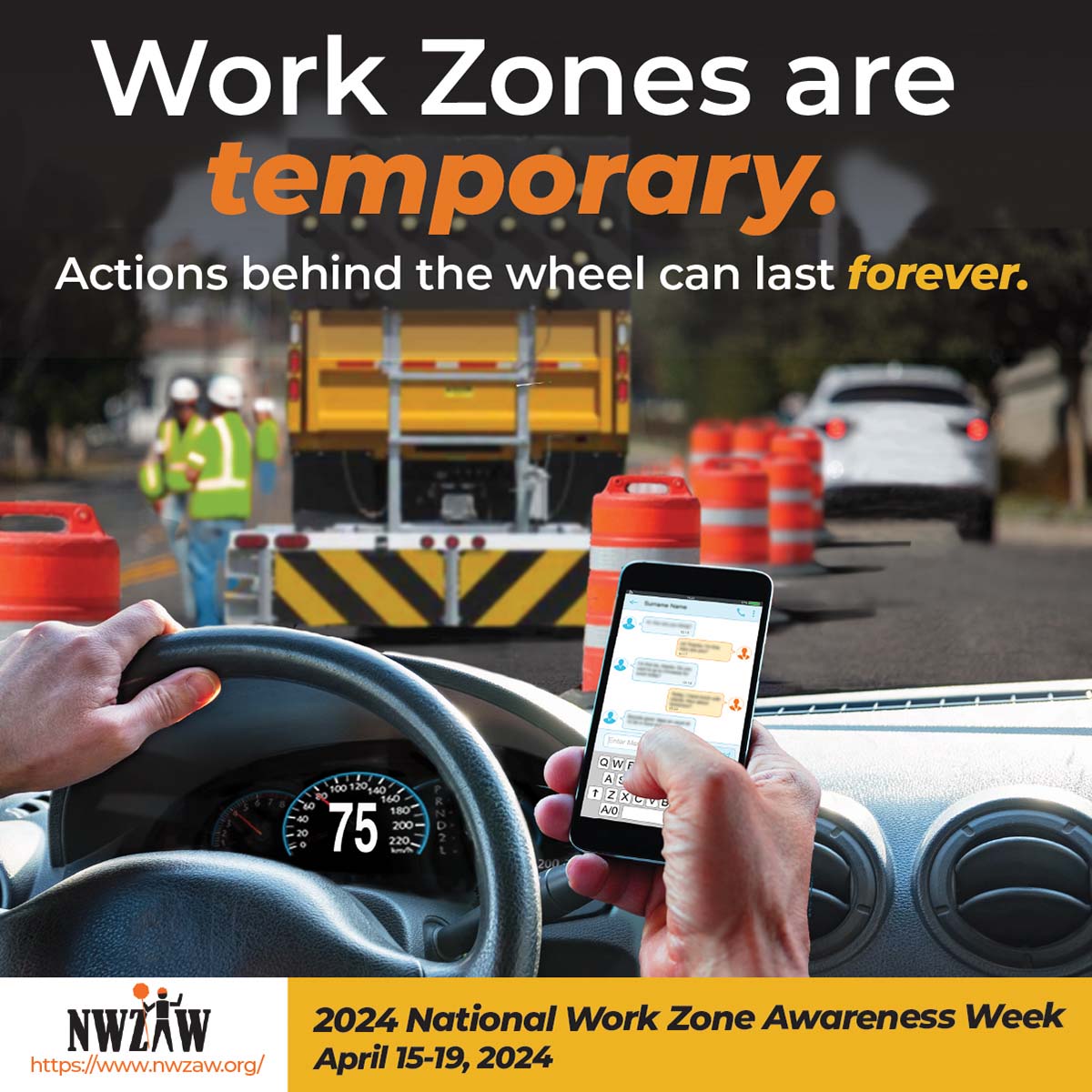Promoting Public Health through National Work Zone Awareness
By: Bill Christian, MD, MPH, MS
Work zones are critical to public safety and the maintenance and improvement of transportation infrastructure. However, if appropriate safety measures are not taken, these areas can turn into dangerous places for both drivers and employees. As a ray of hope, National Work Zone Awareness Week (NWZAW) brings together a diverse range of stakeholders to promote safer work zones and fewer accidents.
In the U.S., work zone incidents result in hundreds of fatalities and innumerable injuries annually. The Federal Highway Administration (FHWA) reports that work zone crashes were responsible for approximately 842 fatalities in 2019 alone. These alarming figures highlight how crucial it is to proceed through work zones with increased awareness and caution.
 The main causes of accidents in work zones are driver carelessness and inattention. Reduced speed restrictions are often broken by drivers, who also often ignore warning signs and text or talk on the phone while driving. Such acts put other drivers and pedestrians in danger in addition to the lives of construction workers. It is essential to educate the public about work zone safety to address these issues. Education efforts aimed at bicycles, pedestrians, and cars can spread important knowledge about the risks connected to work zones and the steps needed to reduce such risks.
The main causes of accidents in work zones are driver carelessness and inattention. Reduced speed restrictions are often broken by drivers, who also often ignore warning signs and text or talk on the phone while driving. Such acts put other drivers and pedestrians in danger in addition to the lives of construction workers. It is essential to educate the public about work zone safety to address these issues. Education efforts aimed at bicycles, pedestrians, and cars can spread important knowledge about the risks connected to work zones and the steps needed to reduce such risks.
Keep the following in mind as you drive:
- Advance Warning Signs: Proper signage and delineation of work zones alert drivers to reduce speed and exercise caution.
- Reduced Speed Limits: Temporary speed limits within work zones accommodate changing road conditions and ensure safety.
- Avoiding Distractions: Drivers must refrain from using electronic devices or engaging in other distractions to maintain focus and reaction time.
- Respecting Flaggers and Traffic Control Devices: Drivers should obey instructions from flaggers and adhere to traffic control devices.
- Patience and Courtesy: Patience is crucial in work zones, as delays may occur due to lane closures and construction activities.
We can dramatically lower the number of collisions and injuries by raising awareness of work zones and encouraging good driving practices. Investing in work zone safety is a commitment to safeguarding lives and maintaining the welfare of communities across the country, not merely an issue of infrastructure. Join us in promoting safer roads and a more promising future for everybody. Let's work together to make every trip through every work zone secure.
Bill Christian, MD, MPH, MS, is a second-year resident in the Occupational and Environmental Medicine Residency Program at the Southwest Center for Occupational and Environmental Health at the UTHealth Houston School of Public Health.

